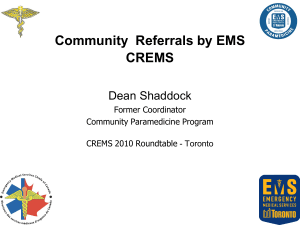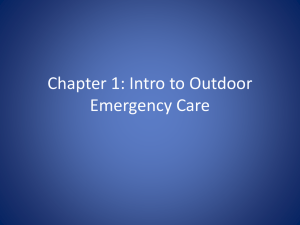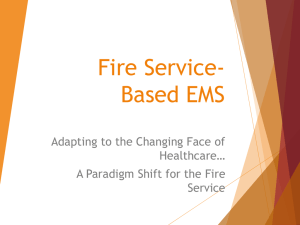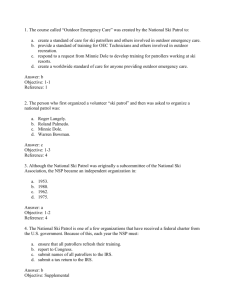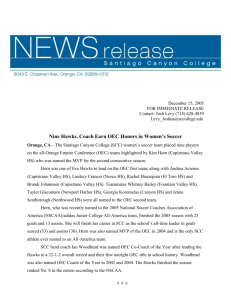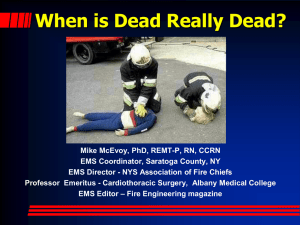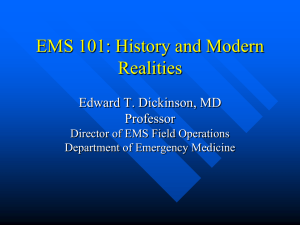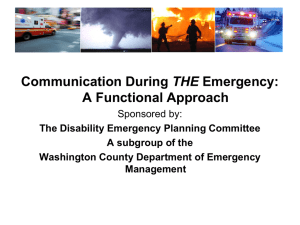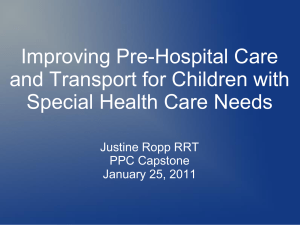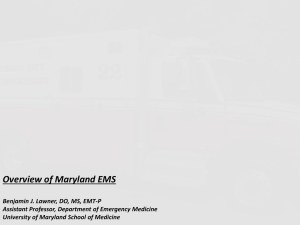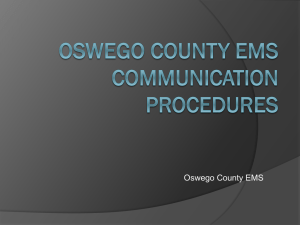F12NSAA_EMS_medical_QA_presentation_Fall_Workshops_2012
advertisement
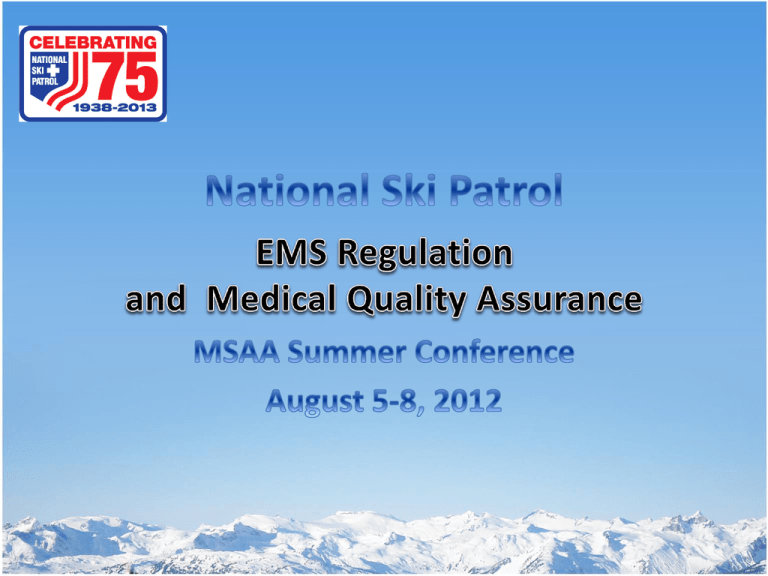
• Between 2009-2011, EMS sought to regulate patrollers and ski patrol operations in four states: Wash., Idaho, Pa., and Calif.). • EMS primary concerns are OEC Scope of Practice and Medical Quality Assurance (physician oversight). • Regulation would include state registration of OEC technicians, EMS fees, background checks, EMS medical director oversight, EMS reporting format, and EMS inspection of facilities and equipment. • State regulation would impede portability of OEC credential across state lines. • To date, Washington, Idaho and Pennsylvania have withdrawn this regulation, and California is still pending. Addressing EMS: Looking Forward • Continue to deliver high-quality OEC courses and refreshers. • Consider model state EMS OEC legislation solution (possible model: pending CAL-EMSA legislation). • Be prepared to address state EMS regulation efforts as they pop up. • Educate and improve relations with EMS services at local and national level. Addressing Medical Quality Assurance: Looking Forward • Adopt an industry-wide, medical-quality best practices program (NSP, NSAA, ASDA, insurance carriers). • Educate ski area patrols regarding medical-quality best practices (NSAA 2012 Fall Workshop program). Ski Patrol Medical Adviser Qualifications • M.D./D.O. • Preferred: emergency room M.D. with linkage to local hospital or trauma center. • When M.D. not available, an NSP medical affiliate or patroller with advanced medical training, such as nurse or paramedic. Ski Patrol Medical Adviser Duties • Provide linkage to local hospital or trauma center. • Review reports and periodically provide feedback to patrollers on types of injury treatment. • Serve as an adviser on medical matters to mountain management and patrol director. • Advise patrol on new medical equipment and techniques. • Serves as adjunct instructor during OEC basic and refresher programs. Medical Professional Coverage • Most ski area insurance carriers provide coverage for medical professionals up to the level of their training for their “immediate care” of the injured skier. • Personal Medical Malpractice Insurance. • Good Samaritan Statutes. Medical-Quality Best Practices Sample Program • Each patrol has a medical review person and/or team made up of available personnel (ER Doctor, PA, Nurse, Paramedic, EMT, OEC). • Medical assessment and treatment information is captured at time of incident (standard NSAA/NSP medical report form). • Medical review person or team conducts routine review of the report forms and uses that information to provide continuing education to patrollers throughout the season. • Serious injury or illness incidents are reported to medical review person or team for review to include: medical information contained in the incident report forms, contact local EMS agency, contact destination health care facility, use this information to provide feedback to attending patrollers. “Skiing has Risks and Benefits: Results Will Vary” Thank you. For more Information twhite@nsp.org
